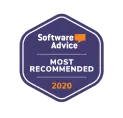3 steps to attracting the right candidates
You thought you had just hired an A-player. They looked on paper, and on Zoom. They said all the right things, had the right qualifications, and seemed to understand the expectations of the job. But as soon as you bring them on board, things start to go downhill.
Your candidate just does not seem to be the right fit for your organization and your company culture. As a result, they are not a top performer. In fact, they’re underperforming, and it’s costing you money. And they will likely not be staying long, it’s going to cost your company even more.
The reason why so many companies make hiring mistakes is that they’re not attracting the right candidates. Some feel that the process of finding and evaluating candidates just takes too long and is too complex. They need people yesterday, so they take a generic approach to recruitment marketing. Or they forget that recruiting is marketing, and they need to get the right messaging out to the right audience.
By following three simple steps, you can dramatically improve your ability to engage with top candidates and start building a pipeline of A-Players.
Step #1: Write your story
The first step is to hold a mirror up to your company. Take a good look at what you’re all about because that’s going to help you attract talent to your team.
Define who you currently are as a company now and who you want to be tomorrow. Reexamine and rearticulate your mission, vision, and values. Create your employer value proposition. Doing this involves more than gathering your leaders in a room and deciding what your mission should be. To be effective, this task should involve input from employees across your organization.
Embrace your employer brand and everything you have to offer as an employer. Get a clear view of what differentiates you from other employers. Make sure that all of your communications, both internal and external, reinforce your employer value proposition and employer brand.
Your employer brand is your reputation as an employer. One of the ways you can manage your reputation is by continually monitoring your reviews on sites like Glassdoor. According to Glassdoor, “86% of employees and job seekers research company reviews and ratings to decide on where to apply for a job.” And 75% of active job seekers are likely to apply to a job if the employer actively manages its employer brand.
To ensure you’re seeking and identifying the best-fit candidates, create new job descriptions, candidate profiles, and hiring scorecards. Also, make sure your evaluation tools correlate to each employee’s job description.
Step #2: Sell the opportunity
This is when you start thinking like a marketer. But when you’re trying to recruit talent, you should always be thinking like a marketer. Glassdoor has some data on that, too. According to their data, “86%” of HR professionals surveyed indicated recruitment is becoming more like marketing.”
Personally, I think recruiting has always been like marketing, but now more companies and HR professionals are getting on board with this idea. As the talent market continues to get more competitive, recruitment marketing will become more and more of an absolute necessity.
In order to attract the customers (employees) you want, you have to sell the opportunity through marketing. Take a fresh look at your job postings. Start thinking of job postings as advertisements and marketing communications and not just as a list of responsibilities and requirements. For many candidates, a job posting is their introduction to your company. Reading about a career opportunity should make them feel inspired, not tired.
Create candidate-focused job ads
Let’s take a look at the difference between a job ad and a job description. A job description is a technical document - really an internal document - that many companies elect to post on job boards. In many cases, it reads like a list of demands, as opposed to a summary of reasons why this is a great opportunity.
Today’s job postings must be engaging, search-friendly, and easily adaptable to social media channels. Candidates don’t want to get an inside look at your applicant tracking processes and human resources requirements. They want to take a look inside your company and see where they might fit. Instead of writing a list of everything the candidate might be asked to do, and everything we’re asking of the candidate, give them a story to read. Let them hear from a current employee and see the kinds of things they’re doing on a daily basis.
Bring your employer brand to life with video
If you really want to get your story out there, you should consider using video. According to Statista, the number of digital video viewers in the United States hit 228.8 million, and that number is expected to reach 248.9 million. Social Media Today tells us that “viewers retain 95% of a message when they watch it through video.
Create video content that reinforces the essence of your employer brand. Start at the top, capturing video comments from company leaders. Allow them to express the mission, vision, and values of the company in their own words. In addition to these, consider incorporating segments that feature interview feedback from recently hired employees, providing real-time insights on the hiring process. Interview current employees and encourage them to express their feelings about working in your company. Give candidates an inside look at what it’s really like to work in this company and see where they can fit into the culture.
A great way to get content to build your employer brand is by encouraging your employees to help create the content. Just as user-generated content is a popular way to support a consumer brand, employee-generated content can be used to reinforce your employer brand. According to Salesforce, “92% of consumers trust online content from friends and family above all other forms of brand messages.”
RecrutingDaily.com did a nice piece on why employee-generated content matters for recruitment marketing. As they point out, “Employee-generated content can act as an organic recruitment tool to attract new hires. One of the companies featured in the piece is T-Mobile, which used employee-generated content to build its employer brand and align it with the company’s consumer brand. They used a hashtag, #BeMagenta, to aggregate their employee-generated content on social media. In addition to being the company’s brand color, Magenta represents the lifestyle and company culture of T-Mobile.
Step #3: Tell the world
Once your story is written, you need to get it published. There are many channels to get your recruitment marketing strategy out there, but you can start with the big two: job boards and employee referrals. These are the quickest, easiest, and most cost-effective ways to market your opportunities to start building a talent pipeline.
Job boards are your friend
Once you’ve created a job advertisement you’re proud of, you’ll want to get it posted on some of the most effective job boards, starting with Indeed and ZipRecruiter. In a survey conducted by Money, Indeed was ranked as the best overall job search site, and ZipRecruiter was named “the best for employers.” According to Indeed, their platform enables you to reach 250 million job seekers. ZipRecruiter, in addition to being a great site for employers, markets itself as the #1 rated job seeker app. Between these two platforms, you will be able to reach a huge audience of both active and passive job seekers.
After Indeed and ZipRecruiter, there are many other job boards you can try out if you need to. Glassdoor and LinkedIn are strong, and don’t forget Monster, one of the original job boards. Be sure to also engage with niche job boards in your industry. For example, techie job boards like Dice, job boards to recruit accountants like iHireAccounting, and college boards like Handshake.
Today, job boards are considered traditional recruitment marketing and the most common vehicle for talent discovery. If you have invested the time to create strong job descriptions, candidate profiles, and advertisements, you can easily take advantage of the large pools of candidates the job boards can produce.
Employee Referrals
Employee Referral Programs have long been one the most successful and cost-effective solutions for recruiting A-level talent. In a recent study on LinkedIn, 82% of employers rated employee referrals above all other sources for generating the best potential leads. It also found that candidates who were referred by employees are 55% faster to hire than those sourced through traditional methods.
A-players tend to know other A-players, and candidates typically place more trust in the opinions of their own colleagues than they do in messages created by a marketing department. Current employees will be motivated to make employee referrals because they’d prefer to work with people they know and believe in.
In some instances, companies offer extra incentives for successful employee referral programs. Special prize promotions and monetary bonuses can help generate excitement about referring potential employees. The marketing of these programs can help create a buzz throughout the company and reinforce a positive message of growth and possibility.
Hiring through employee referrals has many benefits, including:
- High-quality candidates – when employees make referrals, they tend to recommend only quality candidates. After all, they’re putting their reputations on the line as well.
- Cost and time-efficient – No external marketing costs; referrals fill positions in an average of 30 days.
- Build a network – Employee referrals can serve as a talent pipeline for future openings.
- Inspire employee retention – Give current and new employees more reason to stay and grow with the company.
Working with recruiting search partners
Some business leaders feel that they don’t have the necessary resources to execute a talent search campaign themselves. Working with a recruiting agency or search partner can be helpful for some companies.
A search partner can execute and guide the recruitment process including some of the most challenging components of the process, including finding qualified candidates, administering pre-employment assessments, conducting interviews, and even completing background checks with a high degree of focus and attention. A good recruiting company will work closely with you and treat your talent search as if it were their own.
You can also be your own headhunter
Some specialized roles may require the use of a headhunter to attract the right candidates. But that doesn’t mean you have to hire a headhunter. You can do it yourself, by tapping into the resume databases of sites like Indeed and ZipRecruiter. LinkedIn offers a number of good headhunting tools, beginning with LinkedIn Recruiter. They also offer a “lightweight recruiting tool” called Recruiter Lite, as well as a sales targeting and outreach tool known as LinkedIn Sales Navigator.
Being your own headhunter just means using some of the tools that these job platforms are offering employers. You can also use advanced sourcing techniques and manage your candidate outreach with some good hiring software. Finally, if it makes sense for your business, you can employ a dedicated in-house recruiter whose sole focus is the recruitment of specialized talent and A players.
Attracting the right people can be as easy as 1-2-3
If you’re having a tough time making the right hires, take a closer look at the way you’re attracting candidates to your open positions. By attracting a pool of candidates that are good fits for your company – people who are aligned with your company culture – you’ll be in a better position to make the hires you need. And you can do this by following the 3 steps of writing, selling, and telling:
- Write your story - who are you and what are you all about.
- Sell the opportunity - because recruiting is marketing.
- Tell the world - use all the channels to market your jobs
You have a story to tell as an employer, and your story should be your plan of attract!













